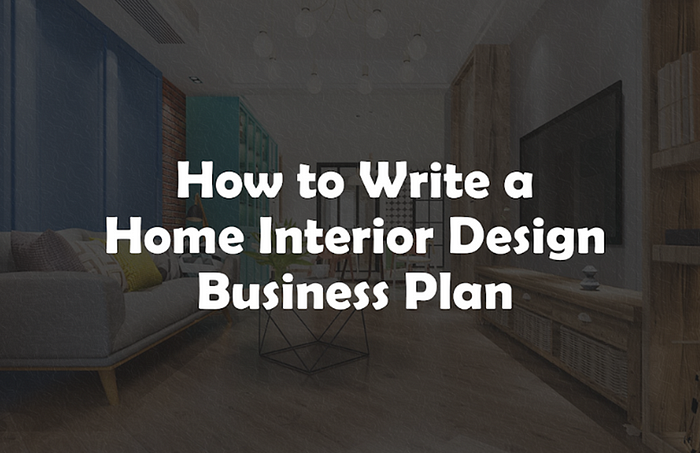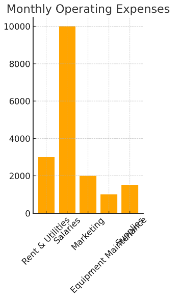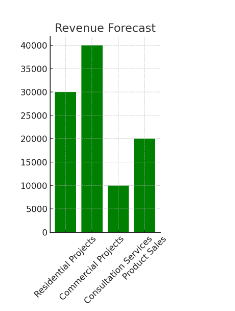Home Interior Design Business Plan: the Ultimate Guide for 2024

Last Updated: 12/17/2023
Are you looking to start a home interior design business in 2023? As an experienced or beginner designer, having a solid business plan in place is key to launching and growing a successful interior design firm. A comprehensive plan should outline your services, target market, team, finances, marketing strategies and more. The following guide provides tips and examples for crafting an effective home interior design business plan.
Why is a Home Interior Design Business Plan Important?
A well-developed business plan is essential for any new company, including a home interior design firm. It provides a roadmap to help avoid costly mistakes and secure funding from investors or lenders. Your plan should outline your services, target market, marketing approach, operations, and financials. It helps keep you focused on long-term goals and increases your chance of success.
Need a Home Interior Design Business Plan?
Create a custom business plan with financial projections and market research in minutes with ProAI’s business plan generator.
How to Write a Home Interior Design Business Plan
Writing a plan for a home interior design business can seem daunting. First, determine if you’ll focus on residential or commercial design. Then, include these key sections:
Executive Summary
The executive summary introduces your plan and business. Keep it concise while summarizing your services, target market, business model, start-up costs, and potential returns. It should capture investors’ interest and give them an overview of your concept.
Company Description
Include your business name and location, owner qualifications and experience, short- and long-term goals, and services offered. Discuss your local market and why you’ll succeed, along with any competitive advantages.
Target Market
Analyze your industry, including trends, competition, risks, and opportunities. Compare your strengths and weaknesses to competitors’. Discuss your marketing plan, strategies to stand out, and customer communication channels.
Services Offered
List the services you provide, like space planning, furniture selection, lighting design, color coordination and accessorizing. Explain your design process and how you determine and meet client needs and keep them informed.
Design Process
Outline the steps in your design process. Determine the budget, timeline, client needs and expectations. Create and review the initial design plan, including sketches, measurements and samples. Make changes as needed before moving to implementation.
Pricing
Consider costs for labor, materials, subcontractors, travel, and incidentals when setting your rates. You can charge flat or hourly fees. Conduct market research to determine competitive yet realistic prices for your services.
Equipment and Supplies
List necessary equipment such as computers, software, printers and scanners. Include basic supplies like fabric and paint samples, measuring tapes, and installation tools. Detail costs in your financial plan.
Financial Plan
Provide budgets for start-up and ongoing costs, a 3- to 5-year cash flow forecast, income statement, balance sheet, and breakeven analysis. Your sales forecast should reflect reasonable growth based on experience and research. Identify how much financing you need and how you’ll repay any loans.
Marketing Plan
Define your target customer in detail. See what competitors offer and channels they use to determine how to differentiate yourself. Set a budget for marketing materials, services, and channels and timelines for launching and measuring each effort.
Exit Strategy
Discuss either selling the business or an initial public offering (IPO). For selling, outline the process and timeline. For an IPO, include a timeline, growth targets, and revenue projections. Establish milestones you want to achieve first in either case. A clear exit plan shows your vision and potential return to investors.
Need a Home Interior Design Business Plan?
Create a custom business plan with financial projections and market research in minutes with ProAI’s business plan generator.
Home Interior Design Financial Forecasts
Startup Expenses

Monthly Operating Expenses

Revenue Forecast

FAQ
- What services do home interior designers typically offer?
Home interior designers commonly provide space planning, furniture selection, lighting design, color coordination, and accessorizing services for residential and commercial clients. Some also offer project management, sourcing and procurement of materials, and styling services.
- How much do home interior designers charge?
Interior design fees can vary significantly based on the designer’s experience, location, and scope of services. According to the Bureau of Labor Statistics, the median pay for interior designers in the U.S. is around $53,000 per year. Hourly rates typically range from $50 to $200. Project fees depend on the size and complexity, and can be $3,000 to $50,000 or more. Some designers charge flat rates while others bill by the hour.
- What degree or certification is required to become a home interior designer?
A bachelor’s degree in interior design is typically required for a career as a professional home interior designer. Some designers earn a Master of Fine Arts in Interior Design. Optional certifications in interior design include those offered by the National Council for Interior Design Qualification and the Interior Designers of Canada. Certification can demonstrate your knowledge and skills to clients and employers.
- What software do home interior designers use?
Common software used by home interior designers includes:
• AutoCAD or SmartDraw for creating floor plans and space plans
• Photoshop, InDesign and Illustrator for presentations, renderings and graphics
• 3D rendering software like 3ds Max, Revit, SketchUp Pro and Chief Architect for 3D models, walkthroughs and virtual staging
• Project management software such as Basecamp, Trello or Asana
• Database software for keeping track of product specifications, samples, vendor contacts, etc.
• Digital interior design software such as Modsy, Havenly and Decorist for online client presentations
- How can I find home interior design clients?
Some of the best ways to find home interior design clients include:
• Build a strong online presence through a professional website, Instagram page, blog and social media profiles. Share photos of your completed projects and design inspiration.
• Partner with local home remodeling contractors, architects, real estate agents and moving companies. They may refer clients to you for interior design services.
• Host events like workshops or webinars on interior design topics. These face-to-face interactions are a great chance to connect with potential clients.
• Look for interior design job listings on websites like Upwork.com, Fiverr.com or Craigslist. Respond to ads from homeowners seeking the services of an interior designer.
• Pitch your services to new homeowners by advertising on Facebook Marketplace, Nextdoor.com or through direct mailers targeted by neighborhood.
• Join your local chamber of commerce and show your work at home and garden shows or charity events like home tours. Network to spread the word about your interior design business.
- Offer a free initial consultation. This allows potential clients to get to know you and see your work to determine if you’re the right designer for their home interior design project before committing to your services.




